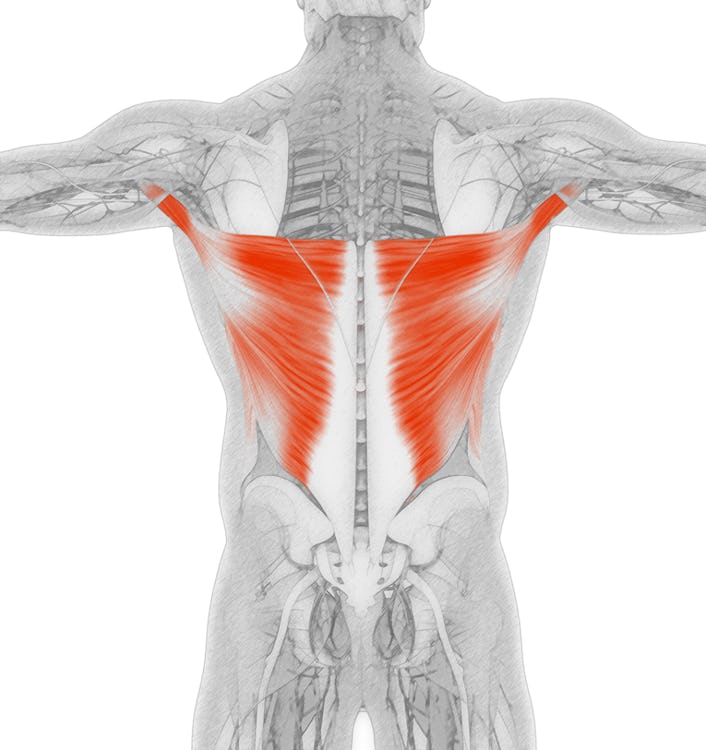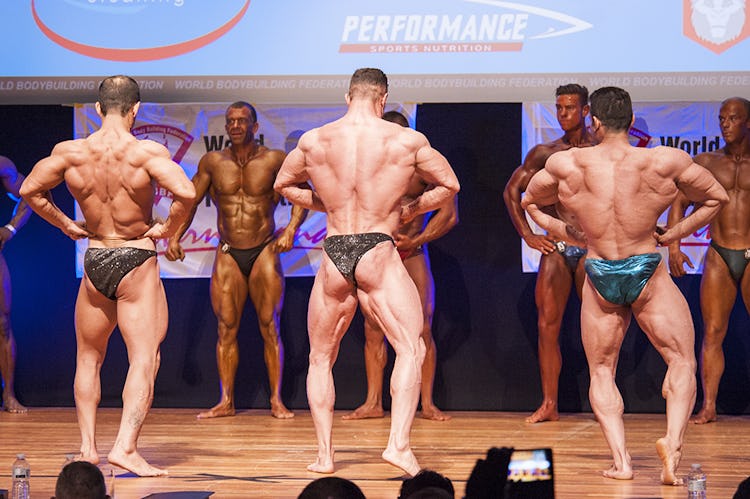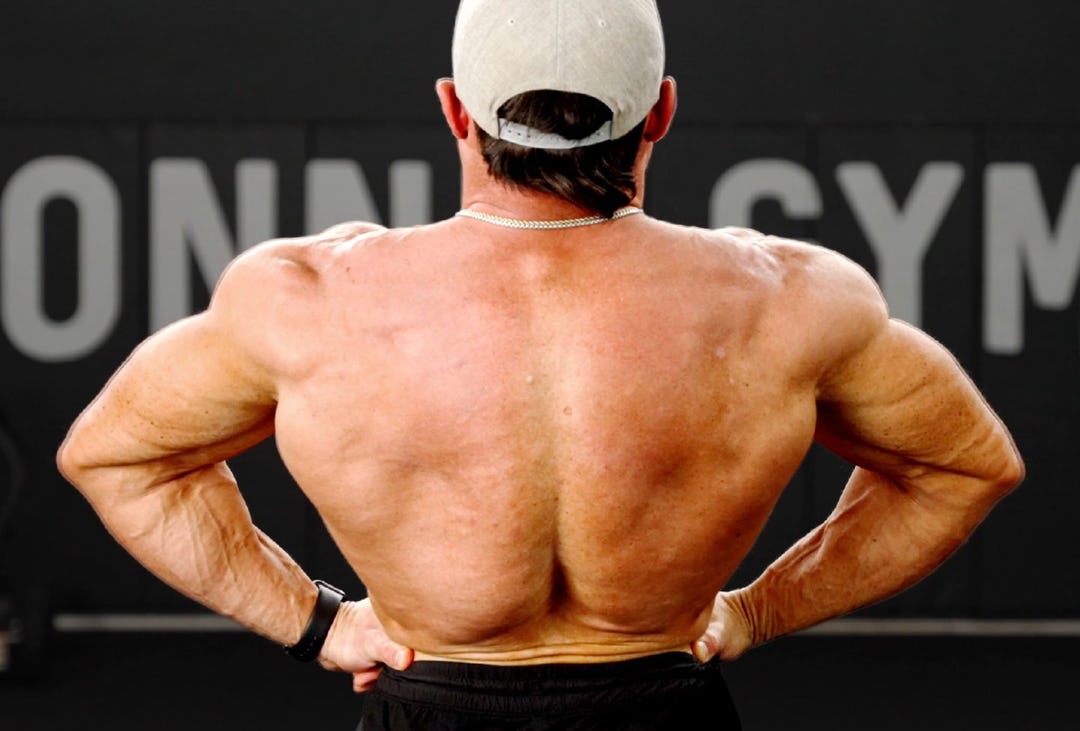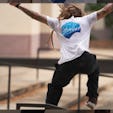If there’s one set of muscles that always seems to lag behind the others on gym rats everywhere, it’s the back—specifically, the lats. (OK, the calves too, but that’s the subject of another article.) Some people claim that they just can’t feel their lats working in the same way they do their pecs or biceps, so they can never fully stimulate them. For others, simply not being able to see the lats as clearly in the mirror has caused them to neglect these muscles.
That’s a bummer, because the lats are essential for a physique that looks muscular and lean. When you flex them, they make your waist look smaller and your shoulders look wider, giving the impression of a powerful, even super-heroic upper body.
Whether you’re a regular guy or gal who wants to sculpt a more balanced physique, or a die-hard lifter who has aspirations of one day competing in a physique show (Bodybuilding, Figure, Classic Physique, etc.), we’ll help you get your back training on track, so that when you spread your lats, you look like you’ve sprouted wings!
What Is A Lat Spread and Why Do People Do It?

The lat spread is a traditional bodybuilding pose used in competition to highlight the width and thickness of the competitor’s latissimus dorsi muscles. The lats, if you weren’t sure, are the big slabs of muscle that run down the sides of your back. They originate on the lower three or four ribs, lower six thoracic vertebrae, and iliac crest (the top border of the pelvis), and insert on the humerus (upper-arm bone) just below the shoulder joint.
In a physique contest, the athlete is required to display their lats in two distinct lat poses—the front and rear lat spread. (The competitor must show the lats facing the judges/audience, as well as facing away, so the dimensions of the muscles can be appraised.) The term “spread” refers to how the lats appear when they’re flexed in a dramatic fashion. When well-developed, the lats appear to spread out from the person’s torso, and the effect is something like a bird spreading its wings—the back looks so wide and dense that you can see it from the front!
Of course, if you’re not planning on posing your physique on stage for sport, you don’t absolutely need to know the technique of flexing the lats aesthetically. But many people like to motivate themselves to get in their best shape by scheduling a photo shoot or other event where they’ll have pictures taken to commemorate their condition, and in that case, understanding how to show off your lats to their best advantage will help them get the credit they deserve, and prove that you put some serious time and dedication into building them. Scroll down for a full tutorial on how to pose your lats effectively when that time comes.
Exercises To Build Stronger Lats
The lats work to pull the arms from overhead to down to your sides, extending your shoulder joints. They’re the main upper-body muscles involved in climbing and swimming. For ages, the go-to lat-building exercises for bodybuilders and other weight-training populations alike have been the classic pullup, chinup, and lat-pulldown, along with various types of rows. These are all great options, but if you’ve lived on a steady diet of the standard lat exercises for years and still feel like your wings haven’t spread, we’ve got some variations to show you that may help you target your lats a little better.
These come by way of Jonny Catanzano, an IFBB Classic Physique pro bodybuilder and coach to physique competitors at all levels (@jonnyelgato_ifbbpro and @tailoredhealthcoaching on Instagram).
1. Reverse-Incline Lat Pulldown
(See 00:52 in the video above)
Pulling with your palms facing each other (a neutral grip) helps you to keep your arms closer to your sides during a pulldown or row. This in turn helps to focus the exercise on the lat muscles, as opposed to the muscles of the upper back. Furthermore, doing the movement with your torso supported on a bench makes the exercise more stable, so your muscles can focus purely on lifting the weight rather than trying to brace your body position at the same time.
“This type of pulldown primarily hits the lower lat fibers, which really contributes to the V-taper,” says Catanzano, referring to the impression the lats give as they descend from their widest point beneath your shoulders to their insertion at your pelvis. The lower fibers are usually underdeveloped relative to the rest of the lats, and adding size to that area will improve the cobra-hood effect of your lats when you spread them. In other words, it will make your waist look smaller while your back looks broad.
Step 1. Set an adjustable bench on a 45–60-degree angle and place it in front of a cable station with a high pulley. If the station offers dual pulleys, attach single-grip handles to them. But if it’s a single pulley, attach a lat-pulldown bar and then attach some single-grip handles to the bar at about shoulder width (we used Angles90 Grips in the video, another great option).
Step 2. Rest your chest on the bench and grasp the handles with palms facing each other (inward). Pull the handles down until your elbows reach your hips. Lower the weight with control.
Be careful not to pull the handles too far back—go until your arms are in line with your body. Pulling further than that can shift the emphasis to the upper back, and we want to keep it on your lats.
2. Close-Grip Cable Pulldown
(See 01:28 in the video)
You’re almost certainly familiar with the close-grip pulldown done with a V-grip handle attachment, but Catanzano recommends using two separate single-grip handles instead (preferably the type with soft, spongy material on the handle). These are the kind you’re probably used to using for chest flyes and lateral raises.
The single-grip handles will allow you to move your hands further apart as you pull the cable down, and that means more range of motion, so you can get your elbows closer to your hips for a full contraction of the lower lats.
Step 1. Attach the two handles to the pulley of a lat-pulldown station and grasp them with a neutral grip. Secure your knees under the pad so your lower body is braced. Lean back a bit so you feel a stretch on your lower lats, but try not to arch your back.
Step 2. Pull the handles down until your elbows line up with your hips. Lower the weight with control.
3. Reverse-Incline Dumbbell Row
(See 02:09 in the video)
This one hits the lats but puts more emphasis on the rhomboids in the middle back, which is literally the centerpiece of a rear lat-spread pose. “Developing this area will add to the overall width of your back,” says Catanzano. As with the reverse-incline pulldown, using a bench takes the lower back out of the movement and reduces your ability to cheat or use momentum, so the target muscles get worked in near isolation.
Step 1. Set a bench to a 45-degree angle and grasp dumbbells. Rest your chest against the bench and allow your shoulder blades to spread apart at the bottom of the movement.
Step 2. Row the weights to your sides with your elbows pointing at about 45 degrees from your torso. Squeeze your shoulder blades together at the top. You may want to use wrist straps to reinforce your grip, as your hands will likely tire before your back does.
4. Kelso Shrug
(See 02:52 in the video)
Done standing upright, shrugging motions work the upper traps, but when done with your chest supported, they hit more of the trap fibers, along with the rest of the upper back. Like the incline rows above, this movement will widen and thicken the middle part of the back, which contributes to a powerful lat spread viewed from behind.
Step 1. Set up as you would for the incline row and simply retract your shoulder blades, squeezing them together at the top of the movement. Keep your elbows straight. Lower the weights with control, and allow your shoulder blades to spread apart at the bottom.
Incidentally, Kelso shrugs can be done at the end of a set of incline rows to finish off the upper back. In other words, do a set of rows to failure, and when you can’t perform another full-range row anymore, simply retract your shoulders for a few reps of shrugs to failure.
5. Neutral-Grip Pullup
(See 03:39 in the video)
“Pullups with a neutral grip almost force you to keep your elbows a little in front of your body,” says Catanzano, “which is where your lats are more active than they would be pulling with your elbows flared out to the sides.”
Step 1. Hang from a bar using a neutral grip. If your chinup bar doesn’t allow that, attach single-grip handles as explained in the close-grip pulldown above. Your hands should be about shoulder-width apart.
Step 2. Pull yourself up until your chin is over the bar and your elbows are in line with your hips. Lower your body down with control.
If that’s too hard, attach an exercise band to the bar and stand on the free loop. The band’s tension will unload some of your bodyweight so that you can get more reps.
Sample Workout For a Better Lat Spread
Catanzano offers the following routine to bring up your lats and improve your lat spread. Perform it once every five to seven days. Rest 2–3 minutes between sets. Note that the neutral-grip pullups and Kelso shrugs are paired, so perform them in alternating fashion, doing a set of the pullup and then a set of the shrug without rest in between. Then rest 3 minutes before repeating until all sets are complete for the pair.
1. Reverse-Incline Lat Pulldown
Sets: 4 Reps: 10–12
2. Close-Grip Cable Pulldown
Sets: 4 Reps: 10–12
3A. Neutral-Grip Pullup
Sets: 4 Reps: 10
3B. Kelso Shrug
Sets: 4 Reps: 12
4. Reverse-Incline Dumbbell Row
Sets: 4 Reps: 12
A Lat Flexing and Spreading Tutorial

Once you’ve built a substantial set of lats, you can work on posing them effectively. Catanzano, who coaches posing as well as training for physique competitors, offers this three-step guide to mastering the lat spread.
(See 04:09 in the video for Catanzano’s demonstration)
1. Squeeze your shoulder blades together and place your fists on your hips. “Imagine holding a pencil between your shoulder blades,” says Catanzano. That’s how far back you want to pull your shoulders.
2. Drive your shoulders down. The movement is the opposite of a shrug, so get your shoulders as far south of your ears as you can. You should feel your lats get tense.
3. While keeping your shoulders down and your lats tense, roll your shoulders forward and slightly upward. Your chest and ribcage should lift in front of you, “nice and high and proud,” says Catanzano. Think about spreading your lats apart as wide as you can.
Catanzano warns that you need to have good shoulder mobility in order to spread your lats impressively. You should be able to raise your shoulders up and down and retract and protract them through a large range of motion—and pain-free. If you can’t, then you won’t be able to achieve the positions that showcase the lats to their fullest potential. If you need work on shoulder mobility, start with this article, Shoulder Mobility for Strength and Injury Prevention.

)





